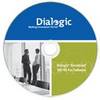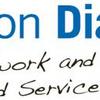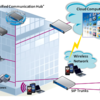Why am I writing about “boring” N11 services? Well first of all, I used one a few weeks ago that I hadn’t used before (511) and it proved really useful. And it got me thinking about them and where they could go. Some of these N11 services are forms of value-added services and mobile value-added services, and have good growth potential.
As a review, N11 codes are special dialing codes that provide various forms of services to callers.
111 is not used in the US but I did some research and I see it’s used for non-emergency health services in England
211 is used for essential community services
311 is used for non emergency government / municipal services
411 is directory assistance, and costs money to dial nowadays
511 is traffic information
611 is used as a telco customer service number and isn’t an official FCC code
711 is used to translate from TDD relay for deaf to
811 is known as a ”call before you dig” number
911 as well know is emergency dialing
I started thinking about all of these when I used 511 a few weeks ago when I was stuck in traffic. One time it was good since I found out the traffic jam was temporary and would last 5 minutes and another time it depressed me since I found out I’d be in the traffic jam for 60 minutes. But I found out! Massachusetts even touts their 511 contact center as saving their taxpayers money! This is a good way to tout why they are doing this as it provides a service to taxpayers, and technology is keeping the costs down. And as many states are taking a closer look at their expenses, using an automated 511 contact center seems to make perfect sense. They should all do it!
While some of these services get you to an operator directly, like 911, many of them, like 411, 511 and 811 get you to a contact center. By now, these contact centers have incorporated speech processing especially since there are more and more people calling into these services from mobile phones, typically while driving! You can’t exactly hit DTMF tones when you are driving – can you? I’m sure I don’t want to hear that answer.
What’s the story with VoIP and these services? There are potential differences so let’s use 911 as an example. 911 services are mandated to work with VoIP. Since fixed lines have a known fixed point, with IP you have an IP address that isn’t a fixed point, it’s just an IP address, and so with VoIP, dialing 911 may be an issues since your location wouldn’t be known. So when you use VoIP in the US, the FCC requires you to register your location. Since I use it at home, I see that my provider requires us to periodically confirm that location. But there are still limitations – for example, if you lose power, you may not be able to use VoIP service at all, and thus not be able to dial 911. I understand that and figure my mobile phone is a good alternative, but you should understand that limitation.
So what is the future of these services? Well, certainly I can see video entering the picture here. With 511 services, I can see a contact center with videos from cameras mounted on the roads. I saw this in England a few years ago and also I see that Massuchusetts again has this capability. You wouldn’t want to look at these while driving of course, but before you leave your house you could look. That’s a true video-enabled contact center. I can also see 911 services might want to utilize video at the other end – since with VoIP services you can utilize video so it might be good if the 911 contact center had video capability as well.
As such, while we take these services for granted, these are services that need to innovate and continue meeting the needs of the emerging endpoint and transport technologies. So these services remain vibrant from a technology and thus infrastructure growth perspective.





 Technorati
Technorati Del.icio.us
Del.icio.us Slashdot
Slashdot Digg
Digg twitter
twitter

















Leave a comment